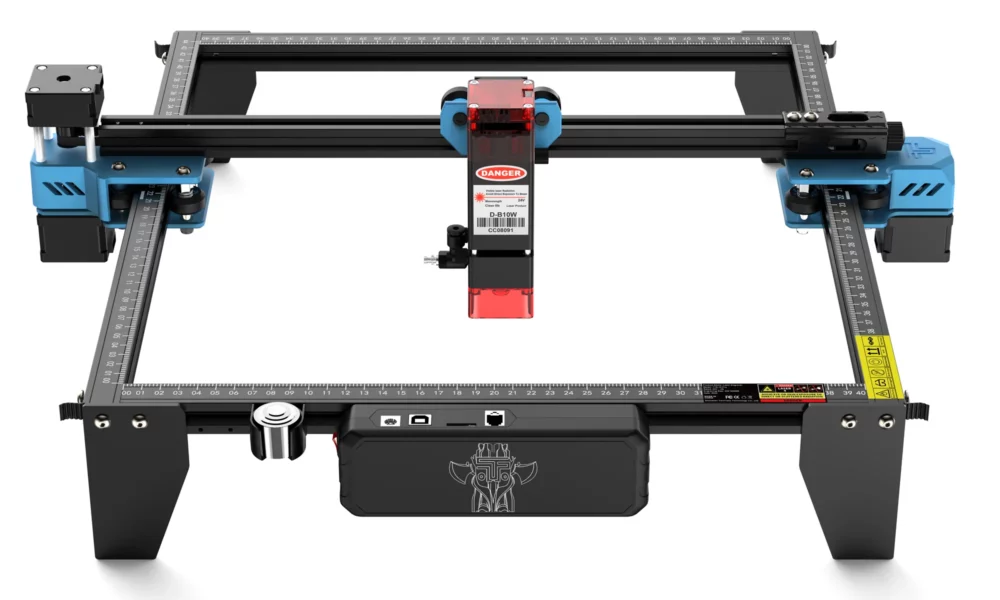Discover the Power of a Laser Marking Machine for Precision Engraving

What is a Laser Marking Machine and How Does it Work?
Key Components of a Laser Marking System
The process of marking is an intricate one that is done with accuracy and efficiency. To achieve this, a laser marking system is set into place. It is made of several core components that include:
Laser Source: The laser source is the main part of the system because it generates the laser beam. This component needs to have the proper wavelength and energy for marking tasks. The commonly used sources are fiber lasers, CO2 lasers and UV lasers.
View Leading CNC Machine Manufacturer and Supplier in China – UDTECH details to get into the details.
Optics and Beam Delivery: The surface on which the laser will be marked needs to be focused on and aimed at as part of this system, and these elements serve the purpose. They usually contain other smaller components, such as lenses and mirrors, and a galvanometer scanner that enables accurate aiming of the beam.
Control Unit: Each element has prescribed measurements such as the angles that the laser operates on, the speed at which it marks, the depth of the mark and the pattern being used in the engraving. With the variety of aspects used, the parameters offered will differ for each of the task components to the Laser marking system’s control unit, offering the precision needed to streamline the process.
Cooling System: Removes the heat produced while other components are doing their designated jobs. This aids the protective laser source and other sensitive portions by reducing heat-related damage.
Workpiece Handling System: A heated workpiece platform is mobile so that steppers can manipulate it and accurately mark it as the laser engraver works, enabling precision steering and automation as the material of the laser marking system adjusts on its own.
For more in-depth information, you should view Laser Marking Machine – UDTECH.
The steps of the laser marking procedure
The marking process begins when the laser source generates a beam of light, which mechanically moves towards the target material via an optical system. The control unit individually sets the motion parameters like speed and intensity relative to the marking template for each step of the marking sequence. The surface interaction of the material and laser ensures marking is done on a microscopic level, making ita permanent marking.
Consider these important techniques:
Engraving: removing excess material to form deep marks with the laser.
Foaming: locally melting surfaces with the laser to form raised marks.
Ablation: the complete removal of thin coatings or layers while keeping the underlying substrate intact.
Annealing: inducing color change on the surface without removing any material.
Laser marking has almost limitless applications in the production of electronics, medical devices, and other equipment, due to it’s precision and versatility.
What are the Different Marking Methods Available in Laser Marking?
What is Fiber Laser Marking?
Fiber laser marking is an incredibly adept and accurate approach to engraving a mark on metals, plastics, and ceramics using a fiber laser. The technology utilizes fiber optic cables with implanted rare earth components to create a narrow, high-intensity beam of light. The marks are produced on the material’s surface by some form of engraving, annealing, or ablation. This type of laser system is especially useful in industry because of its durability, lower maintenance requirements, and faster operating speeds. In addition, they are useful in situations where precision and high-volume processing are essential.
What Are the Differences Between Marking with UV Lasers and Marking with Fiber Lasers?
The main difference between UV lasers and fiber lasers lies in their respective wavelengths and areas of application. UV lasers work with a wavelength of 355 nm 355nm while fiber lasers operate at 1064 nm. The ability of UV lasers to achieve “cold marking,” which greatly minimizes thermal marking damage, allows their usage for heat-sensitive materials such as plastics and glass. Fiber lasers, at a greater wavelength, are more suitable for high-contrast marking on metals and other sturdy materials due to their high-power, deep penetration capabilities. Moreover, UV lasers are preferred for precise marking on fragile substrates, while fiber lasers are built to withstand wear and tear and are designed for industrial use.
Significance of Marking Technology
Manufacturing and logistics industries rely heavily on marking technology for traceability, quality assurance, and identification of products. It enhances a company’s reputation and strengthens its brand by aiding in the management of the supply chain; for example, ensuring compliance with regulatory standards and preventing counterfeiting. Furthermore, laser marking guarantees precise marks in extreme conditions and retains legibility, claiming its importance as a durable marking process. When coupled with its flexibility towards numerous materials and industries, it becomes an indispensable approach throughout production and the life cycle of the product.
What are the Applications of Laser Marking in Various Industries?
Common Marking Applications for Industrial Use
The applications of laser marking are broad and greatly impact industrial sectors, especially due to the precision and efficiency it employs. Some common uses include product identification, such as serial numbers, barcodes, QR codes for branding, logos, and decorative forms. It is also useful in marking dates of production, batch numbers, and various technical details of equipment parts or finished products. These markings are crucial in quality assurance, meeting regulatory requirements, and the ability to track products throughout the supply chain. Every industry from aerospace to the manufacturing of medical technologies use laser marking to create permanent, high-contrast markings that, along with the item’s use, are subjected to extreme temperatures and even chemical wear.
Laser Marking and Engraving in the Automotive Industry
Marking and engraving, alongside other processes, have one main distinction, which is their overwhelming application in automotive purposes. With each automobile manufactured comes the need for marking the VIN (Vehicle Identification Number), while also inscribing identifying information on the engine, along with chassis parts, and labeling smaller gears and electronic sensors. Besides providing an inscribing feature to prevent fraud and guaranteeing counterfeit-free reproduction of vital automobile components, marking supports quality control of parts, while also supporting legal compliance by allowing easy tracking of every single coil over their entire lifespan. Furthermore, the automotive industry greatly benefits from the laser technology for its myriad capabilities to mark various materials carefully and accurately, whether they be metal, plastic, or composite.
What are the Advantages of Using a Laser Marker?
How Does a Laser Engraving Machine Provide Cost-Effective Solutions?
Due to precision and efficiency, laser engraving machines have cost-effective advantages. Unlike traditional methods of marking, laser engraving consumes no inks, chemicals, or stencils. The long life span of laser systems and their minimal maintenance ensure greater returns over time. In addition, the high-speed, automated processes of laser systems increase production and subsequently lower labor costs while preserving quality and precision.
Benefits of Laser Marking Solutions Over Traditional Methods
With respect to traditional marking methods, laser marking solutions outperform in proven persistence, adaptability, as well as being environmentally friendly. Marks produced by laser systems are permanent, resistant to erosion, and able to endure severe environmental shocks, which provide enduring reliability for tasks like serialization and branding. In addition, the flexibility of laser systems permits marking on plastics, glass, and ceramics, along with metals, which far surpasses the limitations of traditional methods. In regard to the environment, laser marking doesn’t pose a threat because it is a clean process void of hazardous wastes, which makes it an eco-friendly option compared to ink or chemical-based laser marking methods. The combination of eco-friendliness, flexibility, and durability makes laser marking solutions more advanced for modern industrial and manufacturing needs.
What Should You Consider When Choosing a Laser Marking Machine?
What Is the Marking Speed and Why Is It Important?
When selecting a machine for laser marking, marking speed must be considered because it directly affects throughput and productivity. The speed of marking is the speed at which the engraver marks the required substrate, usually expressed in characters per second or area per second. For high-volume production settings, faster marking speeds are especially advantageous as they enable manufacturers to improve workflow and shorten lead times. It is still important to strike a balance between speed and accuracy; marks generated at high speeds are not guaranteed to be clear marks, and high speeds could hinder the quality of through, depending on the material and application.
Methods for Assessing the Full Spectrum of Laser Technology
When selecting a laser marking method, all technologies within the scope must be considered. This collection includes fiber lasers, CO2 lasers, UV lasers, and green lasers. Each of these has distinct advantages for particular materials and applications. For instance, flexible fiber lasers work excellently on metals and other tough materials, while CO2 lasers are great at marking wood, glass, and plastic non-metals. Be sure to also pay attention to the type and wavelength of the material, the power output, cooling requirements, and the materials intended to be worked on. Furthermore, a comprehensive analysis of a business’s total cost of ownership, which considers energy consumption and maintenance-oriented tasks, needs to be conducted in order for optimum profitability.
What Are the Essential Features of a Reliable Laser Engraver?
A trustworthy laser engraver needs a variety of features for it to work efficiently and reliably. These features comprise: strong construction to withstand industrial use, sophisticated software for flexible and precise outcomes, and user-friendly interfaces for simplified operation. The machine’s longevity and safe operation are aided by optimal temperature control by air or water cooling systems. Furthermore, enclosed workspaces, doors, and interlocks protect operators from potential hazards, and high-quality lenses with automatic focusing systems enhance marking precision. Adhering to these criteria will improve marking processes with regards to reliability and efficiency.
How to Maintain Your Laser Marking Machine for Longevity?
What Routine Checks Are Necessary for a Laser Marking System?
Regular, scheduled maintenance on your laser marking systems will ensure consistent quality output as well as prolong its lifespan. Begin with the optics–the lenses and mirrors. Look for any signs of scratches, dust, residue, or any other form of damage. These components should be cleaned regularly with appropriate materials so that optical beam quality is not degraded. Evaluate the performance of the cooling system; whether it is air or water-based, these systems should not operate too weakly, since undercooling could lead to overheating and damage to internal components. Check all electrical connections and wiring for visible signs of damage, wear, or loose connections as these can negatively affect performance. Software and firmware updates should also be cross-checked periodically for obsolescence due to newer features and upgrades.
How to Troubleshoot Common Problems with Laser Marking Machines?
While dealing with a malfunctioning laser marking machine, the issue can be resolved more easily with step-by-step troubleshooting. If the machine is not marking or marking lightly, check the laser power settings. Also, make sure the material intended for marking is appropriate for the laser’s wavelength. Also, check the lens and mirrors for cleanliness because dirt can significantly lower marking efficiency. The alignment problem can also produce inaccurate and uneven marks. In such a case, re-align the beam focus and the marking will be accurate. In case the machine suddenly stops working, look for any error messages in the software and consult the user manual. Making sure that the cooling components are working properly will avoid overheating and thermal shutdown. If problems persist, a skilled technician or the support team of the company should be contacted.

Source: Discover the Power of a Laser Marking Machine for Precision Engraving


